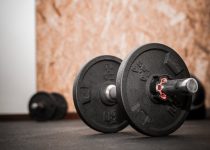How to Use a Heart Rate Monitor for Fat Loss
How to Use a Heart Rate Monitor for Fat Loss
In today’s fitness-driven world, technology plays a crucial role in helping us achieve our health goals. One such
tool that has gained immense popularity among fitness enthusiasts is the heart rate monitor. When used
effectively, a heart rate monitor can be a game-changer in your fat loss journey. In this comprehensive guide,
we’ll explore how to use a heart rate monitor for fat loss, providing you with actionable tips and insights to
maximize your results.
Understanding the Basics of Heart Rate Monitoring
A heart rate monitor is a device that allows you to track your heart rate in real-time. This information is
vital for optimizing your workout intensity, ensuring you’re training in the right zone for fat burning. The
heart rate is a direct indicator of how hard your body is working, and by monitoring it, you can tailor your
workouts to be more effective.
Why Heart Rate Monitoring is Important for Fat Loss
Heart rate monitoring is crucial for fat loss because it helps you exercise at the right intensity. According to
the American Heart Association, the fat-burning zone is typically 50-70% of your maximum heart rate. Training
within this zone allows your body to use stored fat as a primary fuel source, enhancing fat loss efficiency.
How to Calculate Your Maximum Heart Rate
Calculating your maximum heart rate (MHR) is the first step in using a heart rate monitor for fat loss. A simple
formula to estimate your MHR is: 220 minus your age. For example, if you’re 30 years old, your
estimated MHR would be 190 beats per minute (bpm).
Setting Up Your Heart Rate Monitor
Before you start using a heart rate monitor, it’s important to set it up correctly for accurate readings. Most
modern heart rate monitors come with a chest strap and a wristwatch or smartphone app for data display.
Choosing the Right Heart Rate Monitor
There are various heart rate monitors available in the market, ranging from basic models to advanced ones with
GPS and Bluetooth capabilities. Choose a monitor that suits your budget and fitness needs. Popular options
include the Polar H10 and the Garmin
Forerunner.
Wearing the Heart Rate Monitor Correctly
To ensure accurate readings, wear the chest strap snugly around your chest, just below your pectoral muscles. The
sensors should be moistened slightly for better conductivity. Make sure there is a good contact between the
sensors and your skin.
Using Heart Rate Zones for Effective Fat Loss
Heart rate zones are predefined levels of intensity that help you understand how hard you’re working during
exercise. Each zone corresponds to a percentage of your maximum heart rate.
Identifying Your Fat-Burning Zone
The fat-burning zone is typically between 50-70% of your MHR. For a 30-year-old with an MHR of 190 bpm, this
would be a heart rate range of 95 to 133 bpm. Training in this zone for at least 20-30 minutes can significantly
enhance fat loss.
Incorporating Interval Training
Interval training involves alternating between high-intensity workouts and lower-intensity recovery periods.
Studies show that interval training can boost metabolism and enhance fat loss more effectively than steady-state
cardio. Use your heart rate monitor to ensure you’re reaching the desired heart rate zones during each interval
session.
Monitoring Progress and Adjusting Your Workouts
A heart rate monitor not only helps you during workouts but also allows you to monitor your progress over time.
Regularly review your heart rate data to assess improvements in fitness and adjust your workouts accordingly.
Tracking Your Resting Heart Rate
Your resting heart rate (RHR) is a good indicator of cardiovascular fitness. As you improve your fitness, your
RHR should decrease. Aim for a resting heart rate of 60-100 bpm. Use your heart rate monitor to track changes in
your RHR over time.
Adjusting Workout Intensity
If your heart rate is consistently too low during workouts, it might be time to increase the intensity to
continue seeing results. Conversely, if your heart rate is too high, you may need to reduce the intensity to
avoid overtraining and injury.
Additional Tips for Maximizing Fat Loss with a Heart Rate Monitor
While heart rate monitoring is a powerful tool, it’s essential to combine it with other strategies for optimal
fat loss results.
Combining Nutrition and Exercise
Remember, fat loss is not just about exercise; it’s also about nutrition. Maintain a balanced diet rich in whole
foods, lean proteins, and healthy fats. Monitor your calorie intake to ensure you’re in a caloric deficit for
effective fat loss.
Staying Consistent
Consistency is key to achieving any fitness goal. Stick to a regular workout schedule, and use your heart rate
monitor to keep yourself accountable. Set achievable goals and gradually increase the intensity and duration of
your workouts.
Conclusion
Using a heart rate monitor for fat loss is a smart and effective strategy. By understanding your heart rate
zones, setting up your monitor correctly, and staying consistent with your workouts, you can optimize your fat
loss journey. Remember, it’s not just about working harder; it’s about working smarter. Combine heart rate
monitoring with a balanced diet and a healthy lifestyle to achieve the best results. Start using a heart rate
monitor today and take control of your fitness journey!


